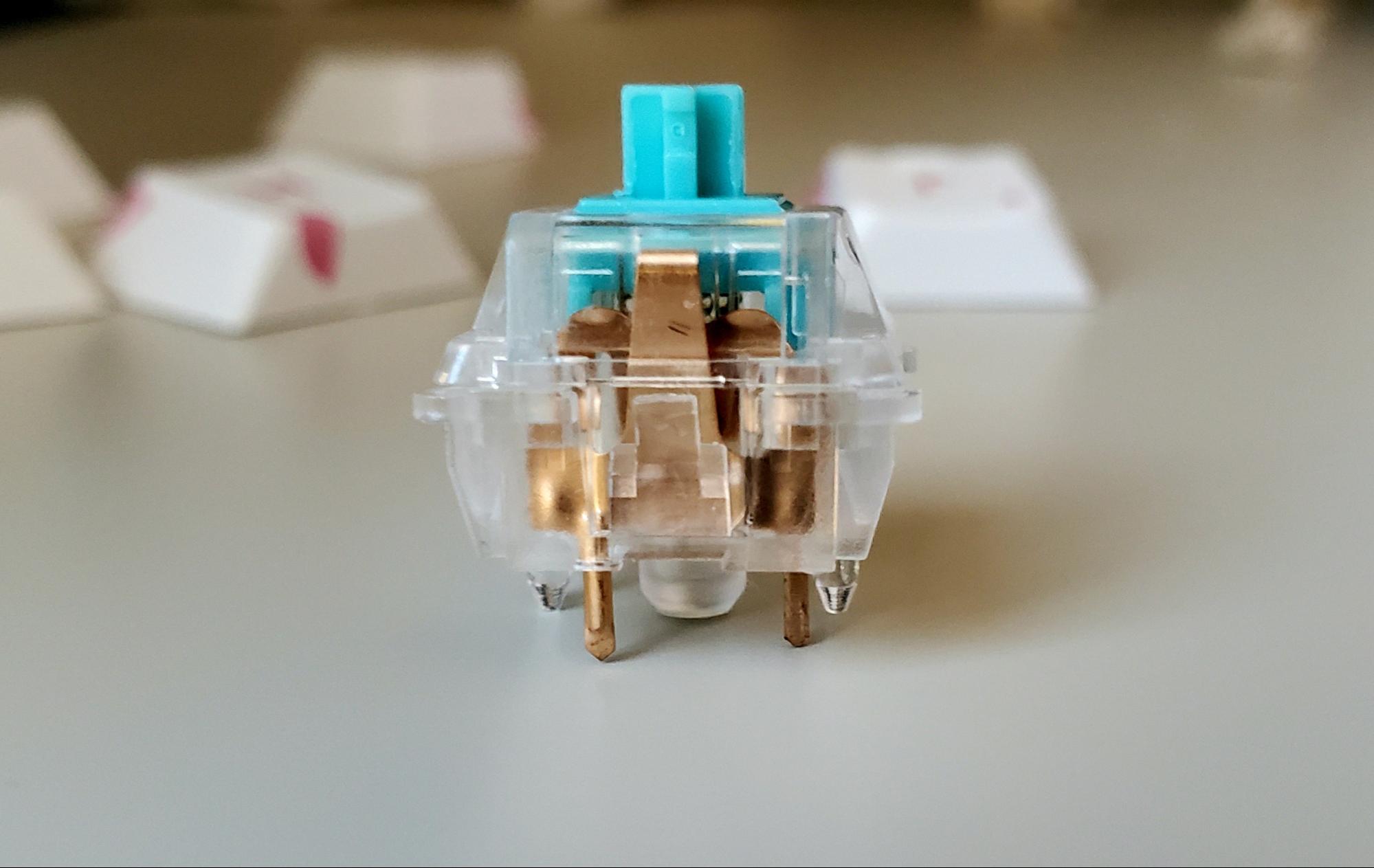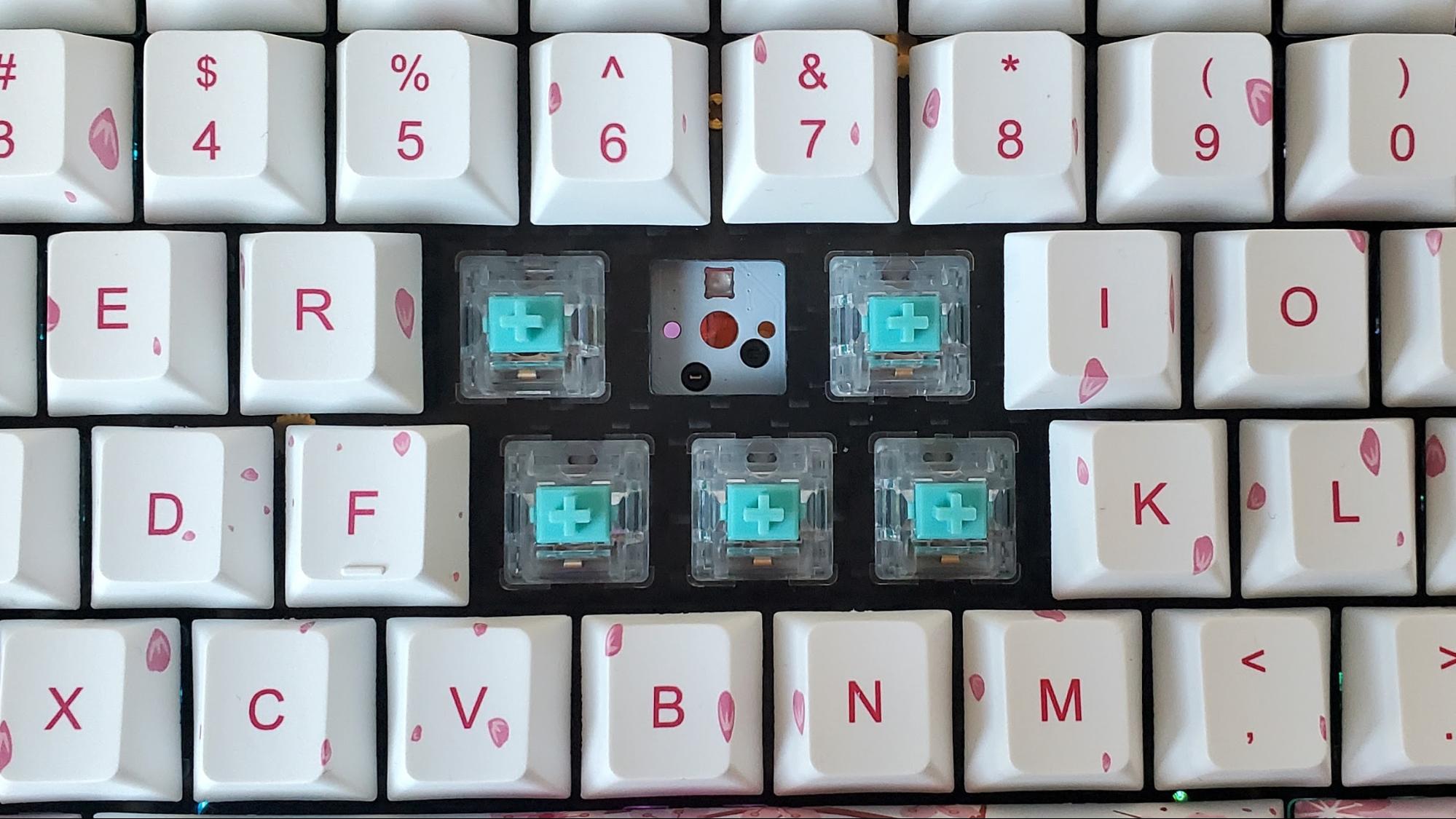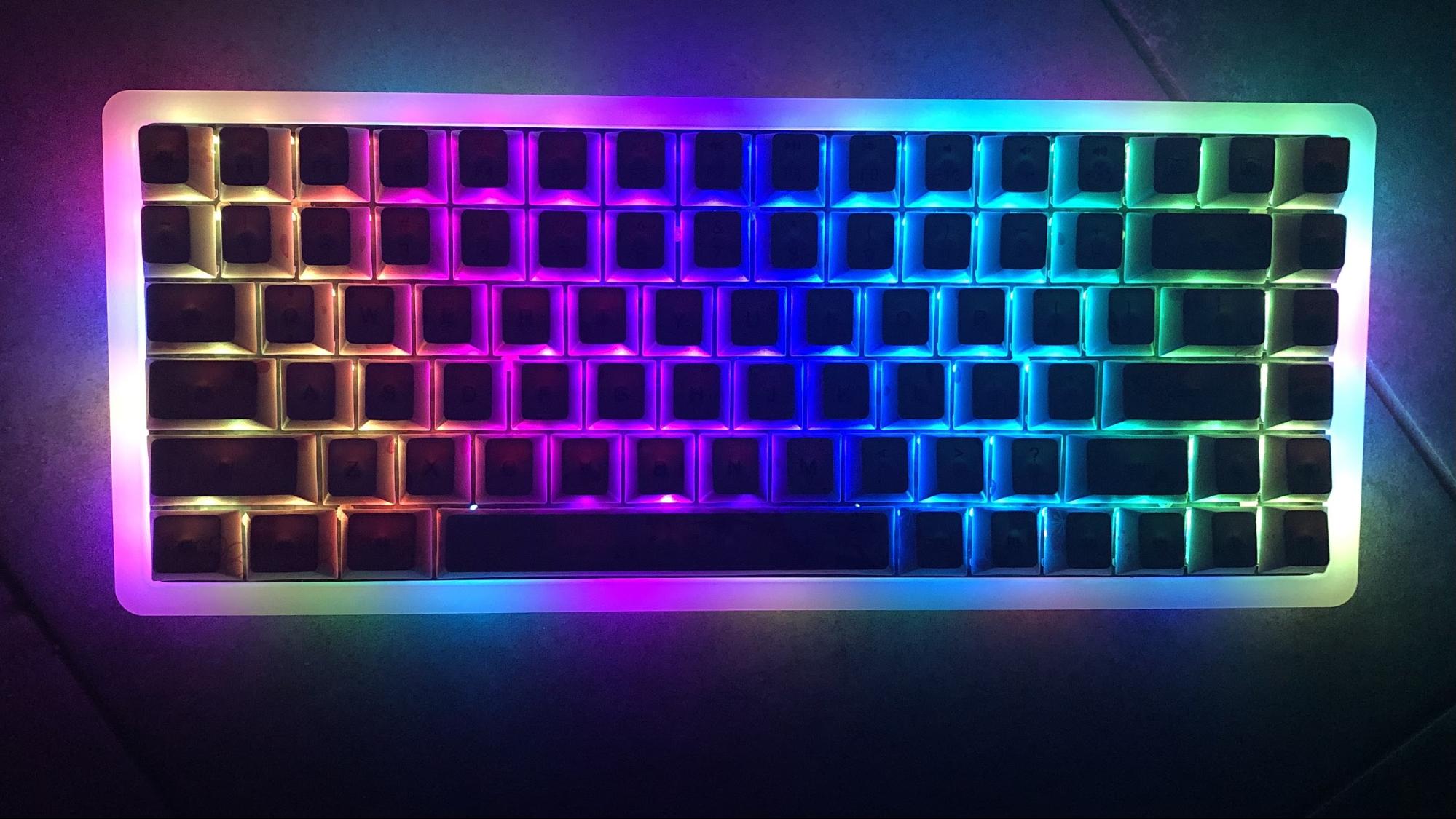Marsback M1 Wireless Hot-Swappable Keyboard Hands-On: Funky Look, Bouncy Switches
Don’t look directly into the light.
Light and snappy, a little too flashy and packing potential, the Marsback M1 is an interesting 75% Bluetooth mechanical keyboard that hit Kickstarter this week (early bird price of $159). It’s an attempt at the best gaming keyboard that experiments freely with a chunky, frosted base, over-the-top RGB and extra peppy switches while pulling in helpful features, like hot-swappable switches, that aren’t as common as we might like.
Marsback sent us a functioning prototype to test out. Ultimately, it’s a bold design that, at first glance, one Tom’s Hardware editor couldn’t decide if he loved or hated.
Marsback M1 Specs
| Switches | Marsback MBS-I (tested), MBS-II or MBS-III& |
| Lighting | Per-key RGB |
| Onboard Storage | 2 profiles |
| Connectivity | USB Type-C to USB Type-A, rubber |
| Additional Ports | None |
| Keycaps | PBT plastic |
| Construction | Polycarbonate plastic |
| Software | Marsback Pro |
| Dimensions (LxWxH) | 12.6 x 5.2 x 1.7 inches (321 x 131 x 42.8mm) |
| Compatibility | Windows, Mac, iOS, Android, Dos, Linux, Unix |
Who Is Marsback?
Let’s get this out of the way. Many are skeptical about buying something off crowdfunders like Kickstarter as there’s a chance it’ll never come to market. The good news is that this isn’t Marsback’s first product. The company, which started in 2018 with 3G consumer gadgets, also made the Zephyr gaming mouse with a built-in fan, which appears to be available outside of Kickstarter on Marsback’s website.
For better or worse, Marsback also acknowledged consumer skepticism about crowdfunding projects on the M1’s Kickstarter page, admitting that due to the keyboard’s large (6,000mAh) battery, some countries won’t allow it to be air shipped, which would result in slower delivery.
The company also pointed to budget concerns, stating that the keyboard’s hand-assembled, homemade mechanical switches are affected by increasing labor costs. It said that “keeping it affordable, yet high quality is never easy. But instead of aiming for making money, we aim for giving you an experience like no other”
A Marsback rep further addressed potential concern, telling us, “We will continue to sell the keyboard after the campaign [ends] on Kickstarter, both on our official website and Amazon store. And the Marsback M1 keyboard is not our first Kickstarter campaign. Before that, we've fulfilled the Zephyr gaming mouse.”
More good news comes from Marsback saying the M1 is “already in production,” with the first step being making and testing the switches. It’s expecting to ship the M1 in early July. The company first came up with the M1 in March 2019.
Get Tom's Hardware's best news and in-depth reviews, straight to your inbox.
In a statement announcing the M1, Jack Walker, co-inventor of Marsback M1, said, "The Kickstarter campaign will help us manufacture our units and finalize our packaging components so M1 can arrive in homes across the world as soon as possible.”
Design
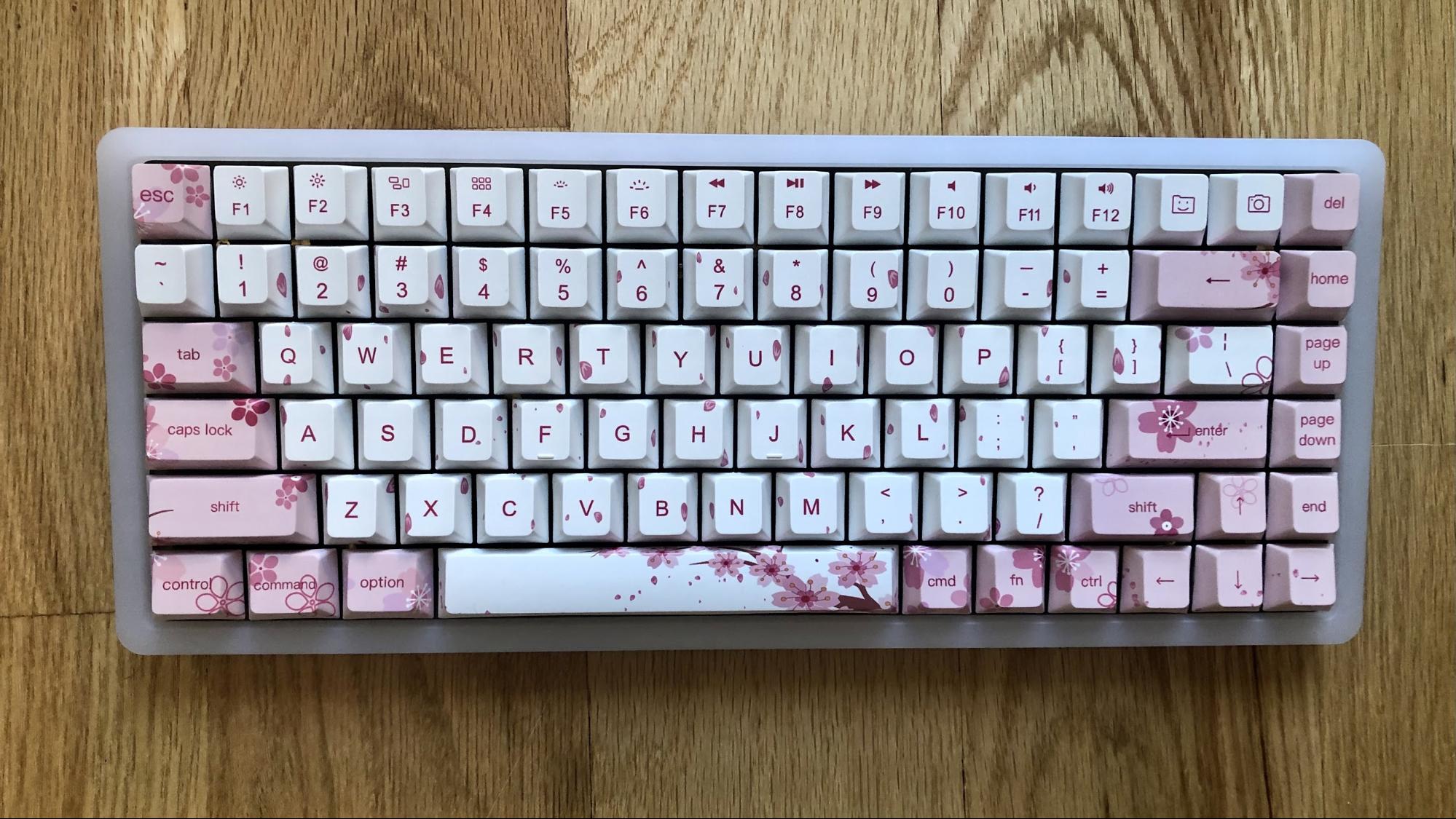
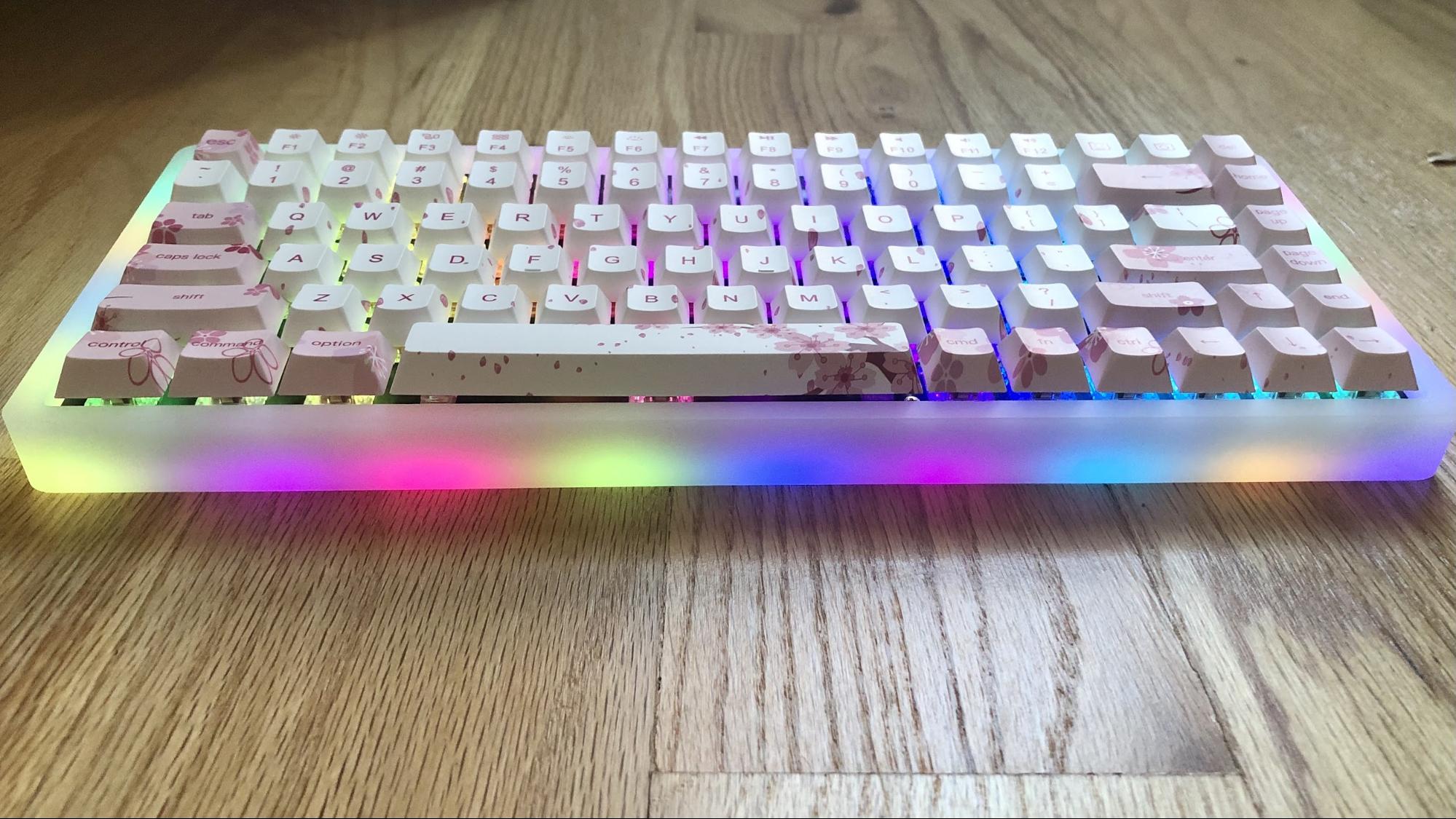
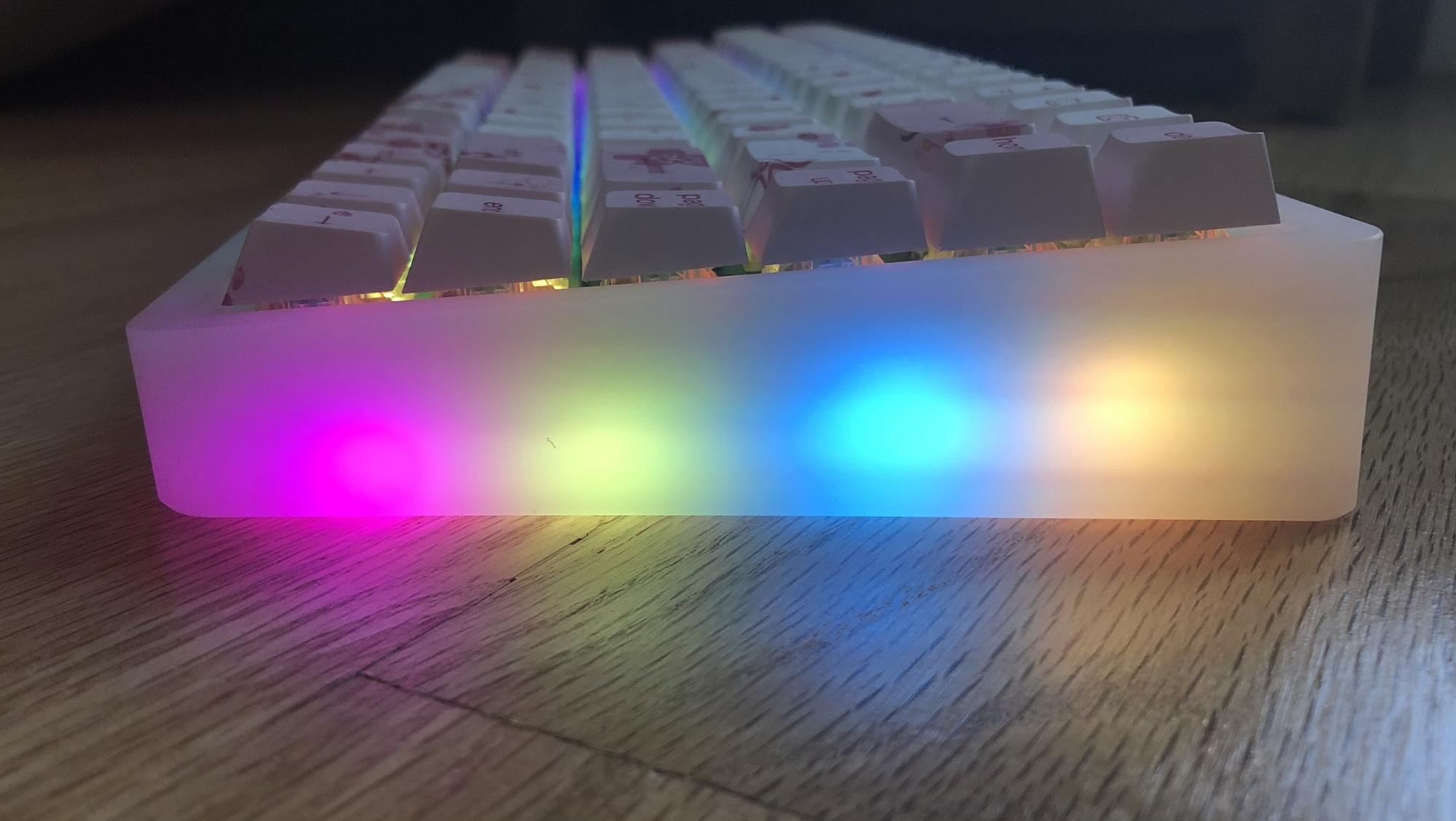
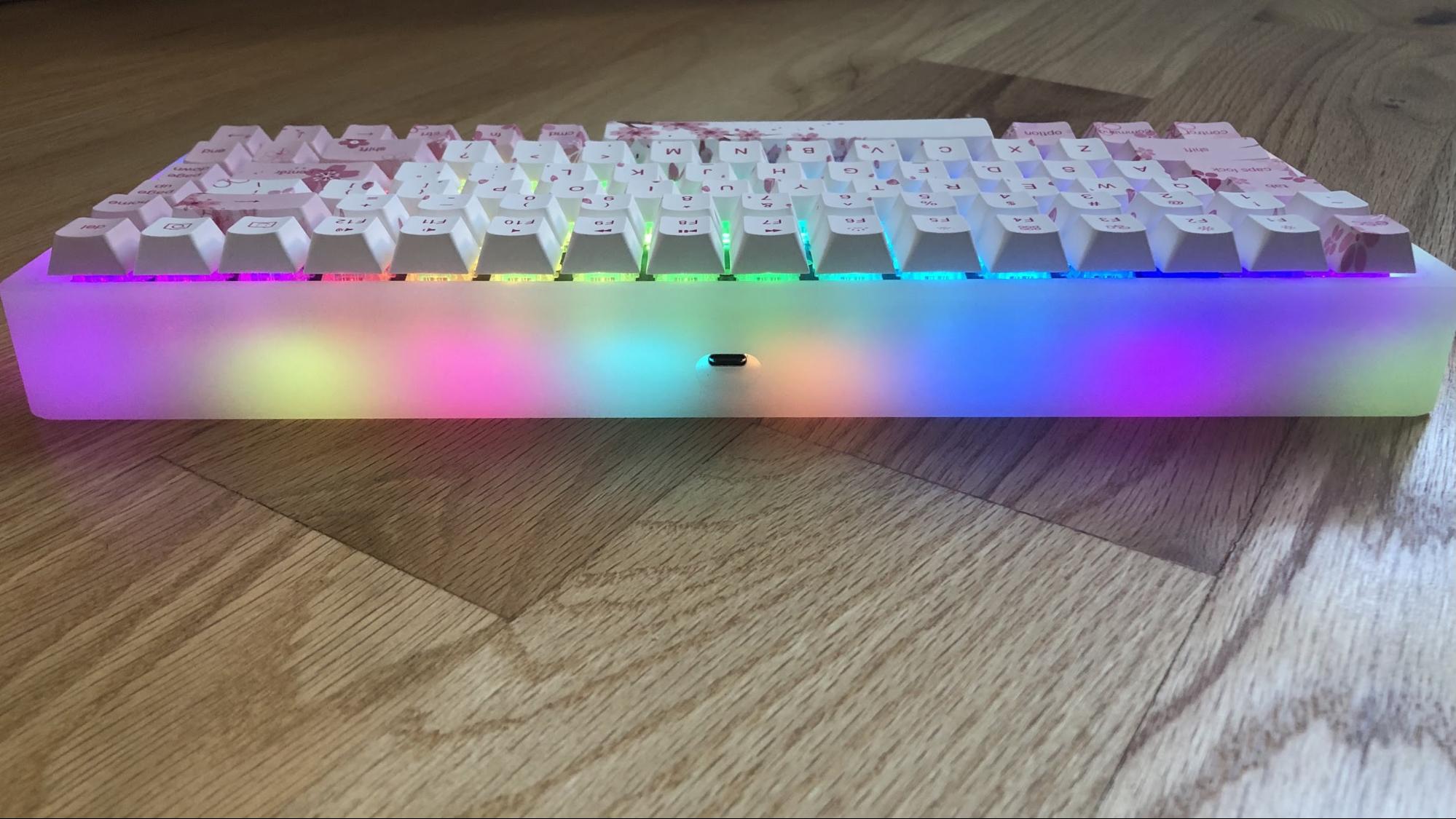
With its thick, heavy, white-frosted base, the M1’s keys look like they’re sitting in a block of dull ice. The body was CNC milled out of polycarbonate, because of the material’s translucent look and ”lack of tooling costs,” according to Marsback’s Kickstarter. This is actually the hardest and most time-consuming part of making the M1.
This makes for a block of a keyboard that looks much different than the black plastic bases and dark tops comprising the vast majority of mechanical clackers today, whether RGB is on or not. It also makes for a much heavier keyboard than you’d expect of a wireless keyboard with a 75% layout.
Lurking within the M1’s base are 21 surface-mounted LEDs. When brought to life, they produce a memorable blast of RGB. The frosty, diffused exterior often paints a cotton candy effect on the RBGs. But don’t mistake that for being dim. In fact, I’d advise you not to look directly into these lights for more than a couple seconds unless you’re after a quick headache. You can adjust brightness, but now matter how you slice it -- be that with a rainbow effect, solid color breathing or a small patch of lights circling the perimeter -- this is powerful, look-at-me RGB.
The downside is the visibility of the individual LEDs, which is so prominent that you can basically count each one. This isn’t an issue from a top-down view, but from the sides it makes the RGB glow look unnatural.
On top of that, in true gaming keyboard fashion, the keys themselves have per-key RGB for the ultimate dizzying array of RGB overload. These 84 LEDs for the keys are also very bright, casting a glow on the RGB base. Thankfully, RGB is controllable with hot keys (as are numerous other functions, such as volume control and a calculator launcher). But I wouldn’t remember them without the handy manual Marsback includes in the box. And there were times when some functions wouldn’t work on my prototype (hopefully this will be addressed with the final keyboards).
I tested the Sakura Pink version of this keyboard, which already looks busy sans RGB, with pink flowers and accents. It was hard to find an RGB effect that enhanced this design rather than overpowered it. And it was hard to tell what was the base’s RGB effect and what came from the keys. The black version and, especially, the white version with its white pudding keycaps seem to blend with the RBG effects better, based on the pictures Marsback has provided.
Sadly, I didn’t quite get the Cherry blossom feel I had hoped for with the M1’s Sakura Pink theme. The spacebar comes close, as do the pink petals sprinkled throughout, (although, I could use more of those). But many of the keyboard’s flowers come off more ‘60s and/or Barbie-themed.
Snappy Homebrewed Switches
What first stood out to me about the M1 are the linear switches Marsback brewed for them. Despite the linear travel, Marsback promised a pleasantly tactile sensation and delivered.
As the M1’s Kickstarter page states, Marsback designed the switches to provide “better control [over] the keystrokes and bounce sound.” The vendor describes the switches as “light and short on touch” with lubrication applied to each switch’s mandrel and the spring connection for a smooth rebound. You should relube after 10 months though, a Marsback rep told us.
The M1 is available with three different types of Marsback M1 switches:
| MBS-I (tested) | MBS-II | MBS-III | |
| Total Travel | 4mm ±, 0.6mm | 4mm ±, 0.6mm | 4mm ±, 0.6mm |
| Actuation Point | 2mm ± 0.6mm | 2mm ± 0.6mm | 2mm ± 0.6mm |
| Actuation Force | 45g ± 15g | 50g ± 15g | 55g ± 15g |
I’ve only had a couple days with the M1, but typing with the MBS-I switches has felt perky and, as promised, satisfyingly bouncy. At first I did have to snap some switches more firmly into place, but since my test unit is a prototype this can be forgiven. Once the switches were properly installed, I was surprised at how responsive the keys felt. They certainly felt linear, but the quick bounce back did add a pleasant distinct feel to the typing experience while making it seem slightly more enjoyable for long-term typing than using Cherry MX Red linear switches.
The switches also felt very smooth. The lubrication seems effective, but I do wonder if the switches will lose a lot of their magic once this wears off. Combined with the keyboard’s PBT keycaps though, typing felt quick and slightly more stiff with a thinner, less hollow noise than what you get on other keyboards, including the Varmilo MA108M Moonlight keyboard, which has very smooth electrostatic capacitive mechanical switches.
Typing on the M1 felt very stable, with the keycaps showing very little wobble and only if I forced them. The MBS-I switches use 5-pins (compared to the 3 pins many switches, including Cherry MX Reds use), and M1 has a plate on top of its PCB, so this sturdiness isn’t surprising.
It took me some time to adjust to the M1 and avoid typos because the keys felt light and depressed easily. The M1’s Kickstarter goes as far as to say that average typing speed could increase by as much as 5% on the Marsback M1. I didn’t immediately see such results. My average speed was the same and my accuracy was slightly down, but I could see both, especially accuracy, improving over time.
And, of course, should you dislike Marsback’s switches, they are hot swappable, making it fast and easy to change your keyboard’s mechanical switches without soldering.
Wireless Connectivity
The M1 has a leg up on productivity in its ability to connect to up to three Bluetooth devices and toggle between them using FN and F2, F3 or F4. I didn’t do a lot of back and forth between PCs in my short time with the M1, but when I did switch between PC to PC, I was able to do so quickly and without issues. The M1 uses Bluetooth 5.1 via a Nordic N52810 chip.
You could also use the M1 with its cable. Marsback even took the extra stepin making the M1 connect via USB-C, which is more common and faster than Micro-USB. However, my prototype annoyingly requires you use hot keys to switch to wired mode.
Marsback opts to pack the M1 with a 6000mAh battery that it says should last up to 2 months with the LEDs off and 12 hours with full RGB. Charging time is pegged at 6 hours. Although, my prototype lacks a power button, which complicates things and is another detail I hope is addressed with retail units.
Software
Mrsback’s M1 uses a 32-bit microcontroller and 128KB of SRAM and will be programmable via Marsback’s software, called Marsback Pro.
Marsback Pro will let users make custom macros, set per-key RGB and store up to 2 onboard memory profiles, which you can activate without software by hitting FN and F9 or F10.
Final Thoughts
If you’re a believer in crowdfunding and like the way the Marsback M1 looks, it may actually be a good contender in the increasingly flooded mechanical keyboard market.
For one, its feature set is hard to match. Reliable Bluetooth connectivity across three devices isn’t that common in a mechanical keyboard, let alone one with RGB. Add hot-swappable switches into the mix, and it becomes even rarer.
Compared to other Bluetooth gaming keyboards, the M1’s $159 early bird price isn’t horrible either. The Logitech G915 Lightspeed is currently $250, and the tenkeyless version, the Logitech G915 TKL, is on sale for about $200. The Hexgears Venture also started via Kickstarter and is now available for $160, and the Razer BlackWidow V3 Pro is $230.
At much above that, though, the M1 will probably have a hard time keeping up -- especially if it doesn’t improve on build quality flaws with the final product. Some will also yearn for the option to connect via wireless dongle, especially for competitive gaming. Additionally, we can’t predict how long the M1 will be available at the early bird pricing or its final retail price.
But typing on this keyboard was impressive and distinct, largely thanks to Marsback’s bouncy linear switches. There are possibilities here. Particularly if you appreciate the phrase “moar RGB.”

Scharon Harding has over a decade of experience reporting on technology with a special affinity for gaming peripherals (especially monitors), laptops, and virtual reality. Previously, she covered business technology, including hardware, software, cyber security, cloud, and other IT happenings, at Channelnomics, with bylines at CRN UK.
-
cryoburner ReplyLurking within the M1’s base are 21 surface-mounted LEDs...
If I had to guess, they probably went with only 21 LEDs around the edges so that they could use an existing keyboard RGB controller that was designed for boards with up to 105 keys. It would probably be better to have the spacing at least as close as the LEDs under the letters, but that would require around twice as many edge LEDs, which might not be supported by readily-available keyboard hardware.
...The downside is the visibility of the individual LEDs, which is so prominent that you can basically count each one. This isn’t an issue from a top-down view, but from the sides it makes the RGB glow look unnatural.
I tested the Sakura Pink version of this keyboard, which already looks busy sans RGB, with pink flowers and accents. It was hard to find an RGB effect that enhanced this design rather than overpowered it. And it was hard to tell what was the base’s RGB effect and what came from the keys. The black version and, especially, the white version with its white pudding keycaps seem to blend with the RBG effects better, based on the pictures Marsback has provided.
My first thoughts looking at the top photo were either "blood spatter" or "spilled wine". It doesn't really look bad, but the soft RGB seems to be in conflict with the cherry blossoms. Perhaps some shade of faint pink or violet backlighting might look better though. Judging by the images, the solid white keycaps probably look the best. Of course, I've generally not been a fan of excessively distracting RGB, at least for something I'm going to actually sit down and use for an extended period. I would probably turn the brightness way down low and set it to a fixed color, or turn it off entirely, though that would kind of defeat the purpose of going with a keyboard design like this.
One other thing I probably wouldn't be totally fond of is how thick it is. That looks like a rather thick keyboard, and could have probably benefited from a matching wrist-rest on the front.

